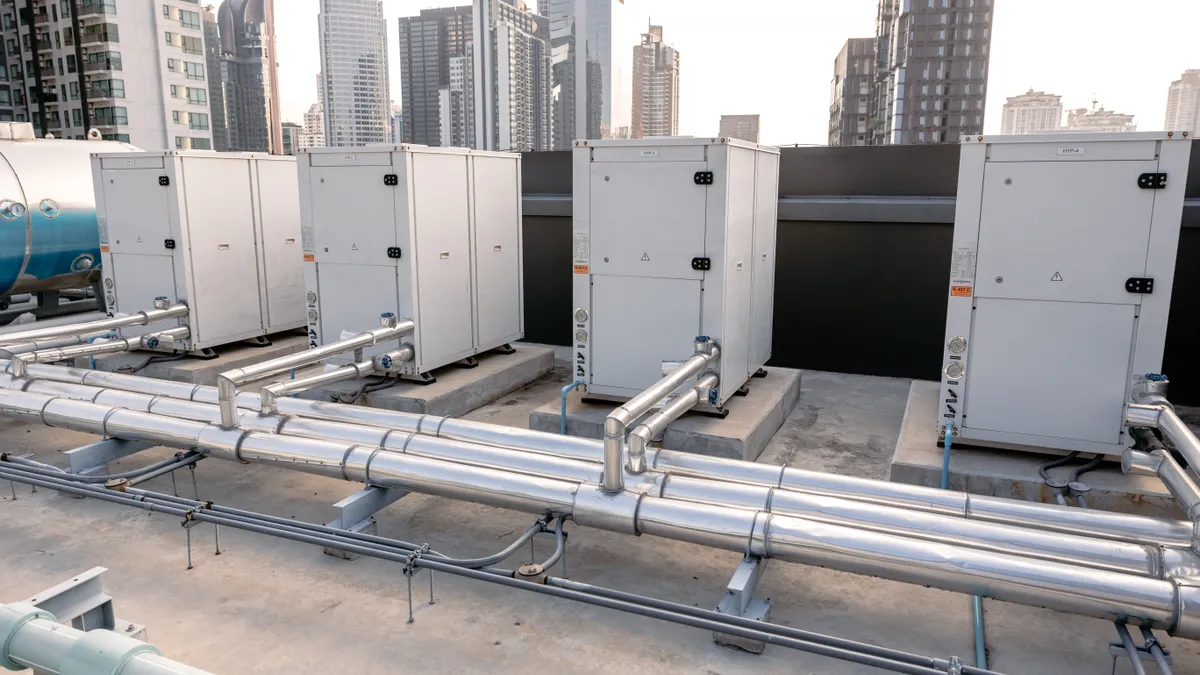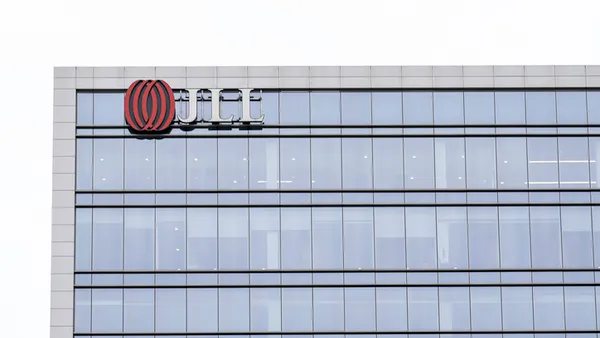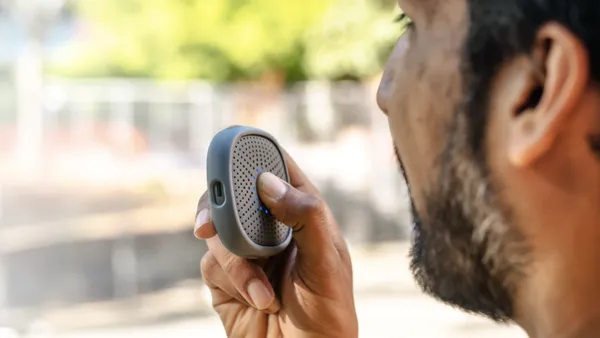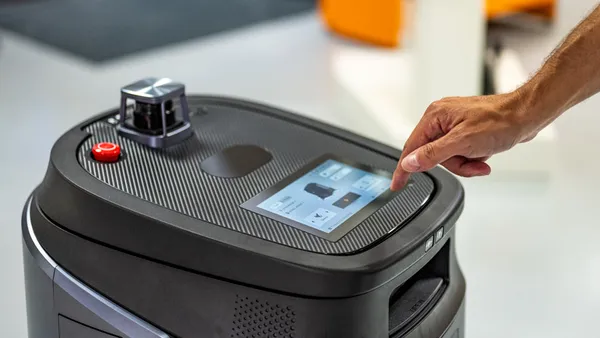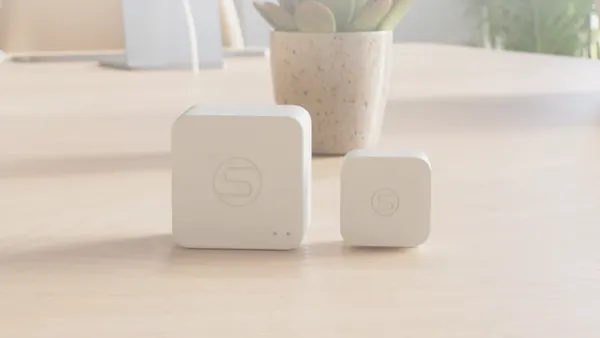Dive Brief:
- All eight manufacturers in the U.S. Department of Energy’s Residential Cold Climate Heat Pump Challenge have completed field testing to demonstrate energy efficiency and improved heat pump performance in cold weather, the agency announced Wednesday.
- Participants include Johnson Controls, Bosch, Carrier, Daikin, Lennox, Midea, Rheem and Trane Technologies. Some of the manufacturers’ cold climate heat pump units, developed as part of the challenge, can operate at temperatures as low as minus 15 degrees Fahrenheit, while still meeting efficiency requirements, the department said in a news release.
- Technologies used for the residential cold climate heat pumps will be applied to rooftop units in commercial buildings through the DOE’s ongoing Commercial Building Heat Pump Accelerator program, executives from Carrier and Lennox said. This accelerator program is part of DOE’s Better Buildings Initiative.
Dive Insight:
With heating and cooling buildings contributing 40% to U.S. greenhouse gas emissions, next-generation cold climate heat pumps are a vital technology that can potentially slash emissions and reduce utility bills, DOE said. The department estimated that rooftop heat pump units for commercial buildings can cut energy costs and GHG emissions by up to 50%, compared with conventional natural gas-fueled rooftop units.
To that end, DOE is working with Commercial Building Heat Pump Accelerator manufacturing partners to boost the energy efficiency and performance of their rooftop units in cold weather. As part of this program, slated to run through December 2027, DOE will provide building owners and operators with resources and guidance for heat pump technology deployments that can support installations at individual sites and across portfolios of buildings, the agency said.
“While there are differences in the application and occupancy requirements between residential units and commercial use, we are leveraging what we learned during the residential cold climate heat pump challenge to scale to commercial buildings in terms of reliability, serviceability and occupant comfort, using similar technological advancements and algorithms,” said Braden Cook, senior director of product management, training and service at Carrier.
Carrier’s advancements in cold climate heat pump technology for commercial buildings leverage innovations in controls, heat exchangers and variable speed compressor technology that can improve low-temperature performance and reliability, according to Cook.
Diagnostic capabilities and advanced controls can boost performance from startup through operation and servicing, expanding the system’s effectiveness in colder climates, Cook said. He noted that this technology, initially developed for residential units, is being adapted to provide efficient heating in commercial buildings, while lowering lifecycle costs.
Meanwhile, the cold climate heat pumps Lennox International developed as part of the challenge feature variable speed drive technology, wet injection and controls powered by in-house algorithms that can enable demand response calls with minimal disruption, said Ajay Iyengar, vice president of advanced technology at Lennox. The variable speed drive technology “optimizes compressor and fan speed to provide the demanded capacity at any given temperature with optimized efficiency,” while wet injection can boost capacity in cold outdoor conditions, Iyengar said.
These technologies will also apply to commercial buildings, with the “technology blocks” that Lennox has developed for residential applications to be optimized for commercial use, according to Iyengar. The larger capacities, ventilation, component layout differences and diverse control protocols embedded in these technologies “require targeted design and optimization for commercial rooftops, which is the focus of our ongoing participation” in DOE’s Better Buildings initiative, Iyengar said.
The manufacturers who were participants in DOE’s residential cold climate heat pump challenge say their cold climate heat pumps are slated to enter commercial production this fall, DOE noted in the release. To date, the manufacturers have field tested products in 23 sites across 10 U.S. states and two Canadian provinces, DOE said.



